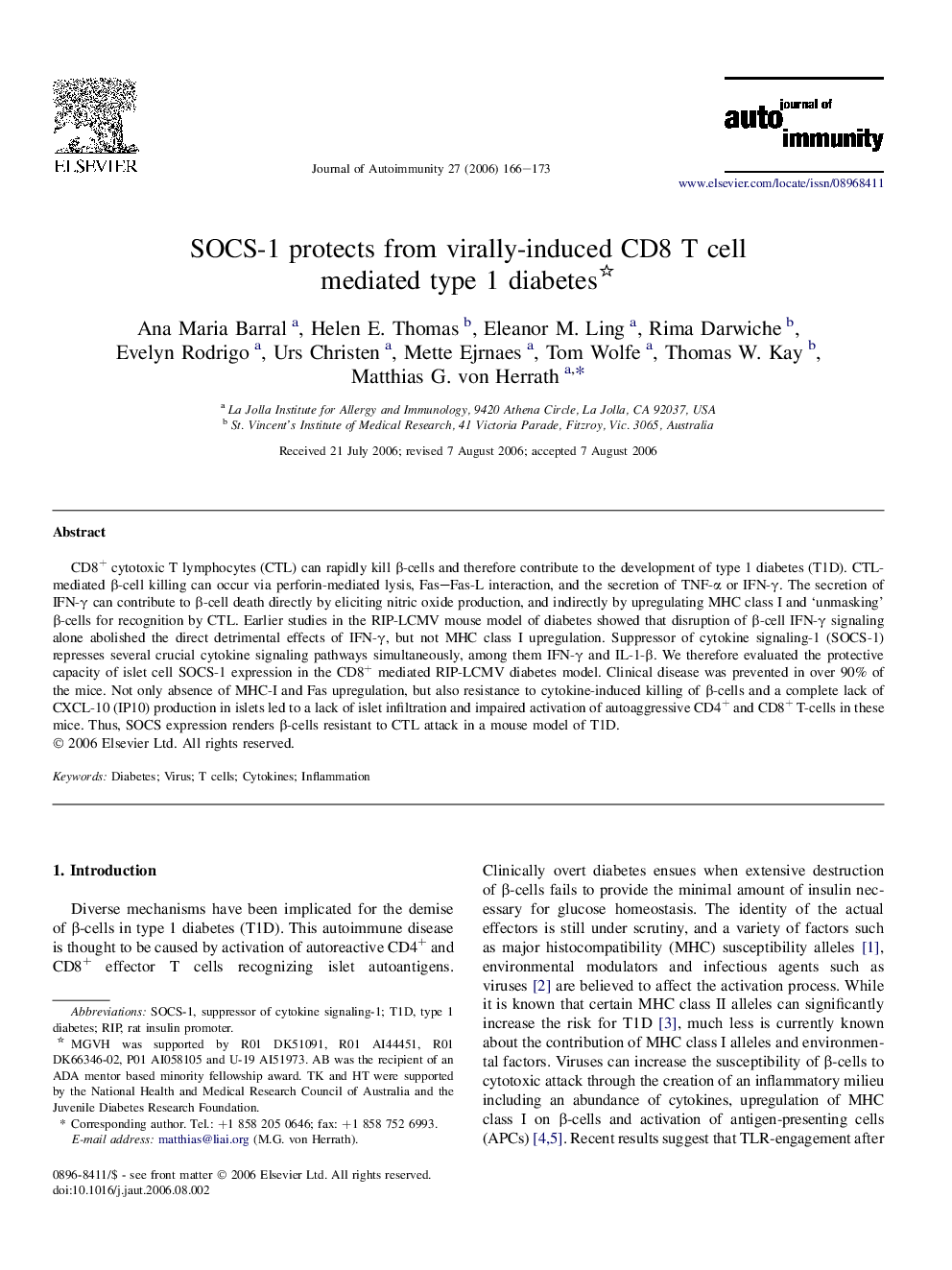| Article ID | Journal | Published Year | Pages | File Type |
|---|---|---|---|---|
| 3368554 | Journal of Autoimmunity | 2006 | 8 Pages |
CD8+ cytotoxic T lymphocytes (CTL) can rapidly kill β-cells and therefore contribute to the development of type 1 diabetes (T1D). CTL-mediated β-cell killing can occur via perforin-mediated lysis, Fas–Fas-L interaction, and the secretion of TNF-α or IFN-γ. The secretion of IFN-γ can contribute to β-cell death directly by eliciting nitric oxide production, and indirectly by upregulating MHC class I and ‘unmasking’ β-cells for recognition by CTL. Earlier studies in the RIP-LCMV mouse model of diabetes showed that disruption of β-cell IFN-γ signaling alone abolished the direct detrimental effects of IFN-γ, but not MHC class I upregulation. Suppressor of cytokine signaling-1 (SOCS-1) represses several crucial cytokine signaling pathways simultaneously, among them IFN-γ and IL-1-β. We therefore evaluated the protective capacity of islet cell SOCS-1 expression in the CD8+ mediated RIP-LCMV diabetes model. Clinical disease was prevented in over 90% of the mice. Not only absence of MHC-I and Fas upregulation, but also resistance to cytokine-induced killing of β-cells and a complete lack of CXCL-10 (IP10) production in islets led to a lack of islet infiltration and impaired activation of autoaggressive CD4+ and CD8+ T-cells in these mice. Thus, SOCS expression renders β-cells resistant to CTL attack in a mouse model of T1D.
